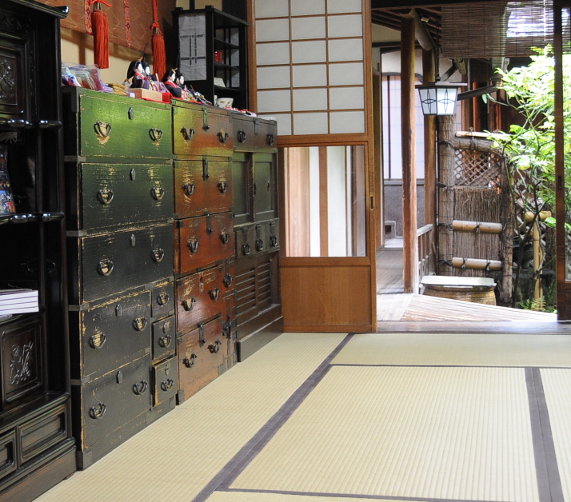Last week, I mentioned that there is no good place in my new bedroom for a Western-style wardrobe. When some of my friends came over a while ago for a very belated house-warming, I told them the same thing, to which one of my Japanese friends responded with the following:
When he was a child, he read the Narnia books. There, the whole adventure starts when the kids step through an old wardrobe. My friend said that he couldn’t understand the concept of “wardrobe” at all. And indeed, Japanese people – at that time at least – didn’t use wardrobes like we know them.

Instead, there was the tansu, a traditional chest with drawers – but obviously, it’s a bit hard to “step through” to the other side. Then, there are oshi-ire, built-in closets that are found in almost every traditional room. But they have a shelf halfway up as well, and are used chiefly for storing futons during daytime – also not very convenient for a quick “stepping through”, although it would be conceivable for a small child to do it.
Anyway, this then led to my question: How did you store things that are usually put on hangers, like suits? Answer: Neatly folded inside the box they came in, inside a tansu or oshi-ire. Just like kimono, hakama, and other traditional garments. All of them require a special way of folding before they are wrapped in paper and stored for the next time.
Thinking about this, I found it interesting how our own cultural experiences shape the understanding – or lack thereof – of other cultures, and that from a young age, apparently. Even though I read stories from all over the world as a child, I can’t remember any grave misunderstandings like the above. I wonder if it never happened (maybe there were always plenty of illustrations at hand) or if my mind just filled in the blanks with familiar shapes, clothes, sounds… It’s probably the latter, but I’m not sure if this is a good thing.

What I experience a lot is references going over my head. A bit like the first 5 questions on “Who wants to be a millionaire?” are supposed to be easy – if you are from the same culture. They are usually questions about commonly shared knowledge, i.e. nursery rhymes, etc. But if you are not from that culture, you’ll often have never heard of any of the things referenced.
For example, I have been watching an anime called “Detective Conan” (名探偵コナン) for over 10 years, but only recently learned, that some of the characters are named after Mobile Suit Gundam characters, because the author is a huge fan. I really like stuff like this. It’s one of the things I enjoy about learning languages. All those nuances and cultural details you get to know.
Yes, learning languages – and history, too – is always interesting. Sometimes things are expressed in a similar way, and sometimes you need the cultural background.